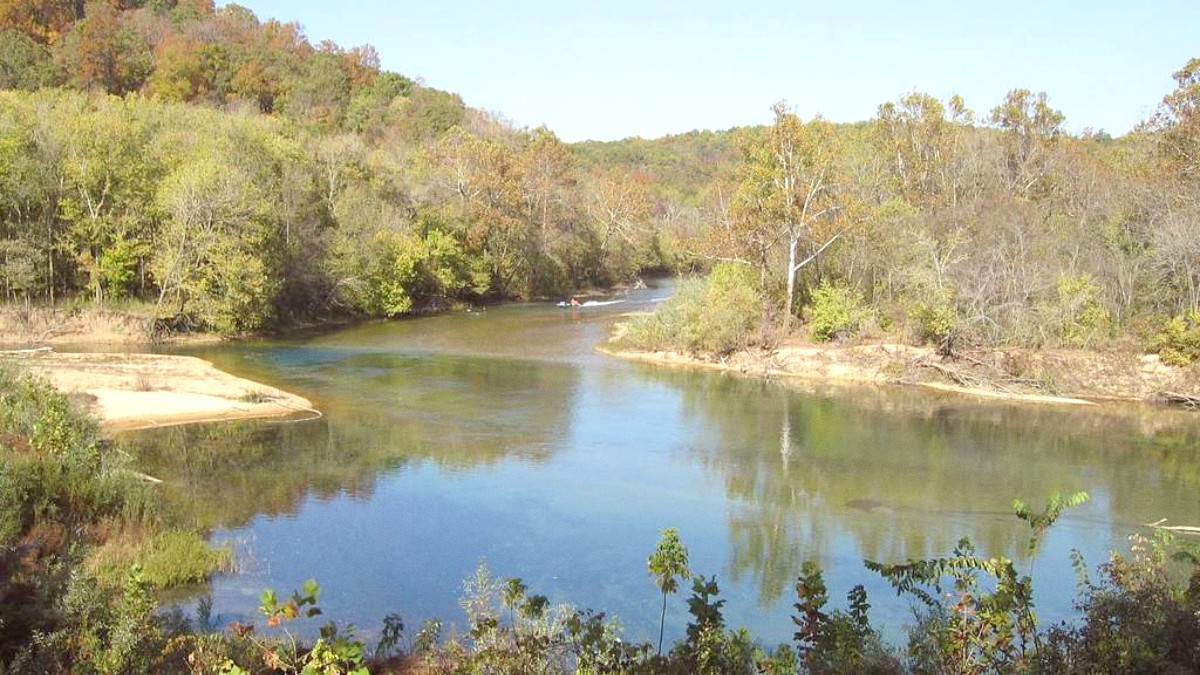
Missouri, USA
The Lake of the Ozarks holds diverse activities. Families find water parks and mini-golf. Adventurers discover boat rentals and fishing spots. Those seeking relaxation find resort spas or lakeside dining. The atmosphere here shifts from lively to peaceful, depending on your chosen corner of the lake. Days pass quickly with waterskiing, jet-skiing, or swimming. Evenings bring a different charm with waterfront restaurants and live music.
Visitors often describe a sense of freedom here. The sheer size of the lake allows for both popular hubs and secluded stretches. You can join the energy of the main channel or find a quiet cove to drop anchor. The experience adjusts to your preference. People come to create lasting memories, whether through a thrilling boat ride or a quiet morning fishing trip.
Picture a vacation where your biggest decision is which water activity to try next, or which lakeside eatery to visit for dinner. The Lake of the Ozarks delivers this kind of freedom. It invites you to step away from daily routines and immerse yourself in a world of water, nature, and entertainment. This guide presents practical information for planning, packing, and enjoying every moment of your visit. The lake awaits your exploration.
The Lake of the Ozarks is a sprawling reservoir in the central Missouri Ozarks. It did not form naturally. The Union Electric Company built the Bagnell Dam on the Osage River in 1931, creating this vast body of water. The lake's distinct shape, with its many arms and coves, earned it the nickname "The Magic Dragon" due to its resemblance to a Chinese dragon winding across the landscape. This intricate shape presents an impressive 1,150 miles of shoreline, a greater length than the entire coast of California.
The lake stretches across four Missouri counties: Camden, Miller, Morgan, and Benton. Its main channel extends approximately 92 miles from the Bagnell Dam up the former Osage River channel. Several major tributaries contribute to its expansive form, including the Grand Glaize Arm, the Niangua Arm, and the Gravois Arm. These arms branch off the main body, creating numerous smaller coves. These coves offer calmer waters, often ideal for swimming, fishing, or simply anchoring for a peaceful afternoon.
Formed by the 1931 Bagnell Dam on the Osage River.
Nicknamed "The Magic Dragon" for its winding form.
Boasts 1,150 miles of shoreline.
Spans Camden, Miller, Morgan, and Benton counties.
Extends approximately 92 miles from the dam.
The Ozark Mountains furnish a backdrop to the lake's waters. These ancient mountains, marked by rolling hills, dense forests, and unique karst topography (sinkholes, caves, springs), influence the region's character. The landscape around the lake presents bluffs, forested areas, and gently sloping shores. This varied terrain holds opportunities for hiking and exploring, complementing the water-based activities.
The lake's depth varies significantly. The deepest points are near the dam, reaching over 100 feet. Shallower areas exist in the coves and upstream sections. This variation in depth supports diverse fish populations and different types of water activities. The large surface area, over 55,000 acres, welcomes a high volume of boat traffic, even during peak season. Despite its popularity, the lake's sheer size still offers plenty of room to spread out.
When you drive around the Lake of the Ozarks, observe the mile markers. They indicate your location along the lake's main channel, starting from zero at Bagnell Dam. This system aids navigation, especially when meeting friends at a lakeside restaurant or marina. The Lake of the Ozarks is a constructed marvel nestled within a natural landscape, with a blend of human ingenuity and natural beauty. This geographical blend underpins its appeal as a tourist destination.
The region’s geography also influences local climate patterns. The Ozarks experience all four seasons distinctly. Summers bring warmth for water activities, while springs and falls present mild temperatures, suitable for land-based exploration like hiking or golf. Winters bring cooler weather, transforming the landscape into a quieter retreat. The diverse geography welcomes a wide range of flora and fauna. Birdwatchers often spot eagles, especially in the cooler months, and various waterfowl. Deer and other wildlife are common in the surrounding forested areas, notably within the state parks.
The story of the Lake of the Ozarks is a testament to human ambition and engineering skill. Its creation began in the late 1920s with the construction of Bagnell Dam. Union Electric Company undertook this massive project to generate hydroelectric power for Missouri. The damming of the Osage River introduced significant challenges. Thousands of workers labored to build the structure. Construction began in 1929 and finished in 1931, during the Great Depression. The project furnished much-needed employment for many during a difficult economic period.
The impoundment of the Osage River led to the flooding of vast areas, including towns, farms, and cemeteries. This transformation reshaped the landscape forever. The resulting reservoir, the Lake of the Ozarks, immediately became a draw. People flocked to witness the new "Missouri's Great Lake." Early tourism began almost as soon as the lake filled.
The Bagnell Dam itself became an attraction. Its engineering feat was impressive for its time, one of the largest private hydroelectric projects globally.
The dam provided stable power to homes and industries, fueling Missouri's development and offering employment during the Depression.
Early tourism boomed. Resorts, fishing camps, and cabins quickly appeared along the new shoreline.
Over the decades, the Lake of the Ozarks grew into a premier Midwest resort destination. Its accessibility from major cities like St. Louis and Kansas City contributed to its popularity. Early visitors enjoyed fishing and boating. As infrastructure developed, more amenities arrived. Hotels, restaurants, and entertainment venues opened. The Bagnell Dam Strip, a historic area near the dam, developed into a lively hub. It offered shops, arcades, and dining, embodying the early spirit of lakeside leisure.